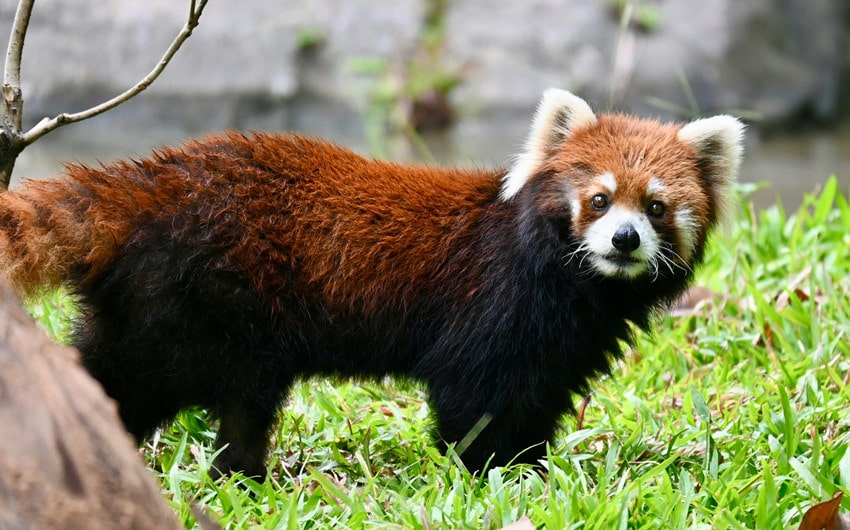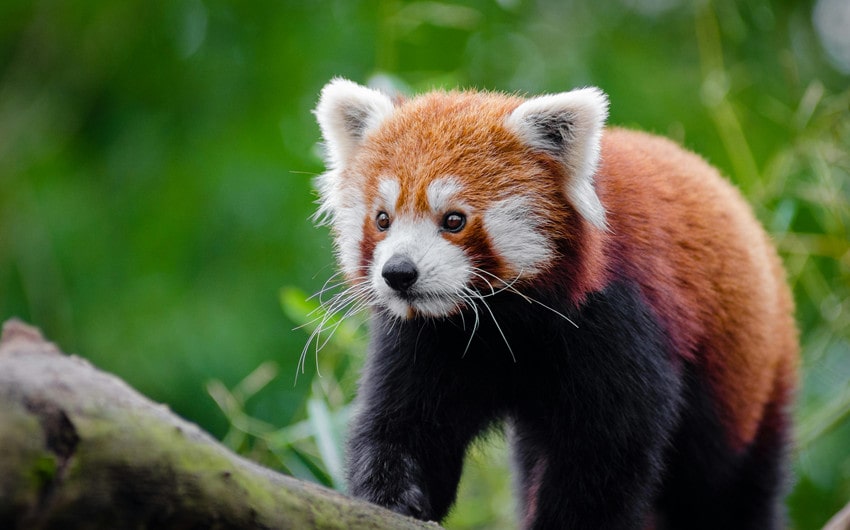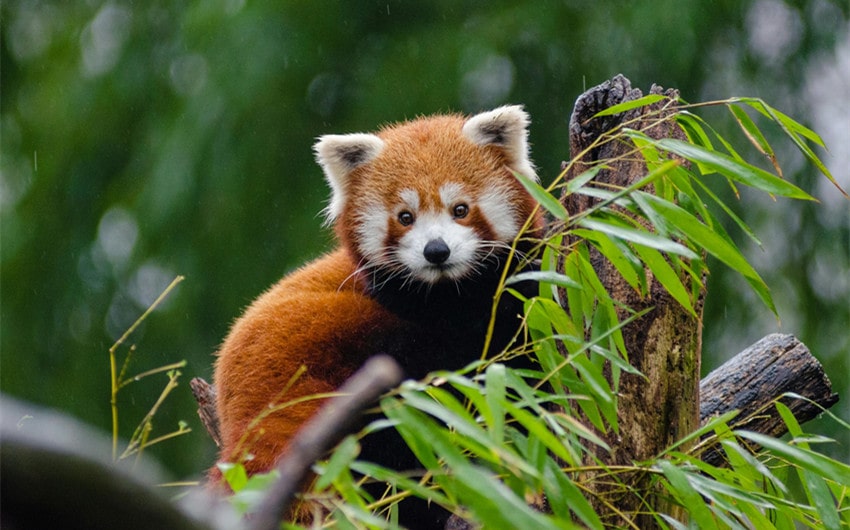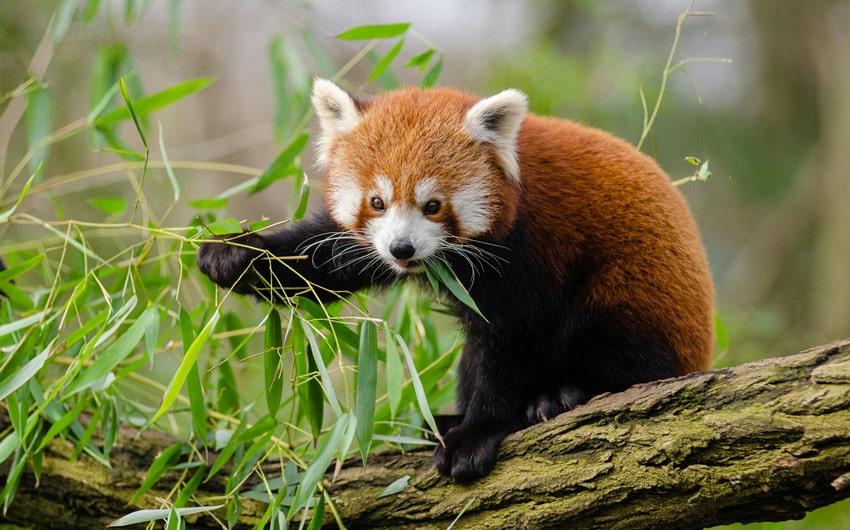16 Surprising Red Panda Facts You Need to Know Today
Have you ever wondered about the world’s most adorable tree-dwelling creature? Red pandas are more than just their fluffy tails and striking red fur—they have fascinating habits and traits that make them truly unique. From their bamboo-filled diets to their incredible climbing skills, these shy animals hold many surprises.
Whether you’re a wildlife enthusiast or just love learning about animals, this article will take you closer to understanding their incredible lives. Let’s dive into some captivating red panda facts you might not know but will definitely enjoy!
Red Panda Facts
1. Red Pandas Are Not Related to Giant Pandas

Despite their name, red pandas are not closely related to giant pandas. In fact, their name comes from their shared love for bamboo, but that’s where the similarities end. Red pandas belong to their own unique family called Ailuridae.
Scientists initially debated whether red pandas were more closely related to raccoons or bears, but genetic studies confirmed they are distinct, standing in a category all their own. This makes them a fascinating example of evolutionary uniqueness!
2. They Are Found in the Himalayas and Nearby Regions
Red pandas inhabit the temperate forests of the Himalayas and surrounding areas, including Nepal, Bhutan, Myanmar, and parts of China. These regions are characterized by cool climates, abundant bamboo, and dense canopies—perfect for red pandas to thrive.
They prefer altitudes between 4,900 to 13,000 feet, making them well-adapted to mountainous environments. Unfortunately, deforestation and human activity have severely reduced their natural range, putting their populations at risk.
3. Their Diet Is Mostly Bamboo
Though classified as carnivores, red pandas mostly eat bamboo, which makes up about 95% of their diet. They nibble on the soft shoots and leaves, though their diet may also include berries, flowers, small mammals, and bird eggs.
Because bamboo is low in nutrients, red pandas need to eat large quantities—up to 20,000 bamboo leaves per day! To help with digestion, they have a slow metabolism and specialized teeth suited for chewing tough plant material.
4. Red Pandas Have a Built-In Thumb
One of their most fascinating features is their false thumb, which is actually an extended wrist bone. This adaptation helps them grip bamboo stems, making it easier to forage for food. This thumb-like structure is an example of convergent evolution, as giant pandas also have a similar adaptation despite not being closely related.
Their clever “thumbs” make them skilled feeders, whether they’re munching on bamboo or climbing trees in search of fruit.
5. They Are About the Size of a House Cat

Red pandas may look like small bears, but their size is closer to that of a house cat. They weigh between 7 to 14 pounds and measure 20 to 25 inches in body length, with their bushy tails adding an extra 12 to 20 inches.
This small size helps them move nimbly through the forest canopy, where they spend most of their time. Despite their compact stature, their thick fur and bushy tails make them appear fluffier than they actually are!
6. Their Tail Helps Them Balance and Stay Warm
A red panda’s long, bushy tail isn’t just for show—it serves several important purposes. First, the tail helps them maintain balance as they climb and leap between trees. Second, it acts as a built-in blanket during cold Himalayan winters.
When temperatures drop, red pandas curl up into tight balls, wrapping their tails around their bodies and faces to stay warm. The tail also features six rings of alternating colors, which help camouflage them among the mossy branches of their forest home.
7. Red Pandas Are Excellent Climbers
Red pandas are arboreal by nature, meaning they spend much of their lives in trees. They have sharp, semi-retractable claws and flexible ankle joints, allowing them to climb up and down trunks with ease. They can even descend trees headfirst, a skill not many animals possess.
Their time in the trees is not just for safety—it’s also where they forage for food and escape predators. Their climbing skills are essential for survival in their rugged, mountainous habitats.
8. They Are Most Active at Dawn and Dusk
Red pandas are crepuscular, meaning they are most active during the twilight hours of dawn and dusk. This behavior helps them conserve energy and avoid predators that are more active during the day or night.
During these hours, red pandas forage for bamboo and other food, often covering large distances in search of the best patches. The rest of the time, they are known to nap in trees, curling up in a cozy ball and occasionally dangling a limb or two over a branch.
9. Red Pandas Are Solitary Animals

Red pandas are highly independent creatures and prefer a solitary lifestyle. They spend most of their time alone, coming together only during the mating season. Each red panda maintains its own territory, marked using scent glands located on their feet, as well as urine and droppings.
These scent markings act as a communication system, helping them avoid direct encounters with others. The solitary nature of red pandas is a survival strategy, reducing competition for resources like bamboo in their forest habitats.
10. They Communicate With Whistles and Chirps
Although red pandas are solitary, they do communicate when necessary, particularly between mothers and their young or during mating season. Their vocalizations include whistles, chirps, squeals, and huff-quack sounds. These unique sounds convey different messages, from signaling distress to attracting mates.
Along with vocal cues, red pandas also use body language, such as tail flicking and head movements, to express themselves. Their quiet yet distinctive communication reflects their shy and elusive nature.
11. Red Pandas Are Endangered
The red panda is classified as Endangered on the IUCN Red List, with fewer than 10,000 individuals remaining in the wild. Their population is in sharp decline due to habitat loss, deforestation, poaching, and climate change.
Bamboo forests, their primary habitat and food source, are being destroyed to make way for agriculture and urban development. Additionally, red pandas are hunted for their fur and sometimes illegally traded as exotic pets. These threats highlight the urgent need for conservation efforts.
12. They Have a Unique Fur Pattern
Red pandas’ stunning reddish-brown fur isn’t just for beauty—it serves as camouflage in their natural environment. The warm reddish tones blend with the mossy, lichen-covered trees of their forest home, while the black fur on their belly helps them stay hidden from predators below.
Their white facial markings, which resemble a mask, are distinctive to each individual, much like fingerprints. This unique fur pattern not only helps red pandas evade predators but also makes them one of the most visually striking animals in the wild.
13. Red Pandas Have a Slow Metabolism

Red pandas are not built for high-energy activities. Their bamboo diet is low in nutrients, so they rely on a slow metabolism to conserve energy. This metabolic adaptation allows them to make the most out of their limited diet while maintaining their daily activities.
They spend a significant amount of time resting—up to 13 hours a day—to reduce energy expenditure. Their energy-saving strategy mirrors that of giant pandas, making them well-suited for survival in their challenging habitats.
14. They Are Culturally Significant
Red pandas hold cultural importance in several regions where they are found. In Nepal, they are known as “Habre”, a symbol of peace and goodwill. They have also inspired various folk tales and stories, often being associated with luck and prosperity.
Beyond traditional culture, red pandas have gained global recognition in modern media. Characters inspired by red pandas, such as in animated movies and logos, have helped raise awareness about these unique animals, connecting people worldwide to their conservation story.
15. Red Pandas Use Their Hind Legs for Defense
Although red pandas are generally shy and non-confrontational, they can defend themselves when threatened. When cornered, they stand on their hind legs, using their bodies to appear larger and more intimidating to potential predators.
This posture is not only defensive but also allows them to use their sharp claws more effectively. If escape is possible, they will quickly climb a tree to avoid confrontation, relying on their agility and climbing skills to stay safe.
16. Red Pandas Clean Themselves Like Cats
Red pandas are meticulous groomers, much like domestic cats. After eating or waking from a nap, they lick their fur to keep it clean and free of debris. They also use their front paws to rub their faces and ears, ensuring that every part of their fur remains neat.
This grooming behavior not only keeps them clean but also helps them regulate body temperature and maintain the insulating quality of their thick coats. It’s another charming habit that adds to their appeal!


